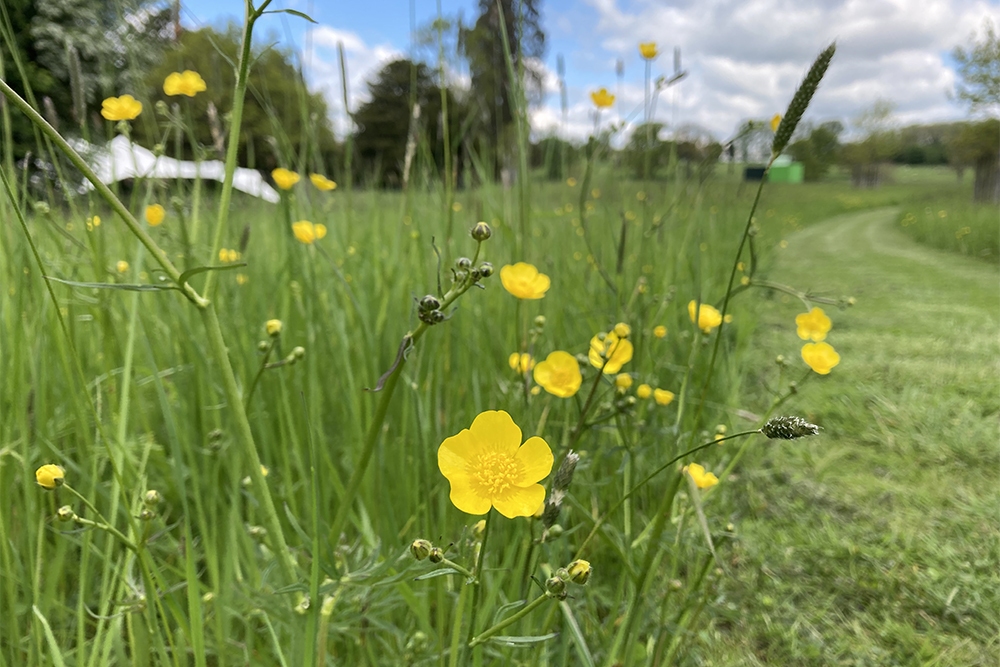Landscape & Garden update – April/May 2021

Blog by Fiona Tansey, Landscape Manger
Have you heard of the #NoMowMay initiative? The call to arms of wildlife gardeners and enthusiasts everywhere. Here at Compton Verney we intend to keep as much of our grass as possible unmown for as long as possible. Untidy areas are just another name for insect nirvana!

We have mown the paths to encourage visitors into the meadow and as usual the wild flowers and grasses have really taken off. The abundant rain, after a dry spring, has encouraged everything to reach for the light, and some of the grasses are setting seed already.
The most prolific grass species are meadow foxtail, timothy, yorkshire fog and sweet vernal grass.
The wildflowers that are most recognisable are the dandelion, meadow buttercup, vetch and knapweed.
All the plant species support a huge variety of bees, flies, beetles, butterflies and moths. In turn these invertebrates attract birds and bats and the long grass provides a home for the mammal population.
This is the kind of synchronicity that works so well when practised by everyone, even those with smaller plots than ours. We are very lucky to be able to help preserve 80 acres of native wildflower meadow on our site.

If you have taken part in #NoMowMay this year, thank you, and we hope you have enjoyed seeing the variety of plants that can emerge when they’re left on their own for a while. Please share your photos with us on social media. Tag us @comptonverney on Facebook, @ComptonVerney on Twitter, @compton_verney on Instagram or use #ComptonVerney
Elsewhere in the Grounds it was a cold and dry start to spring this year. Apart from a few days of warm weather it felt like the temperatures barely rose above the point of jumper removal.
This had an effect on all wildlife. Here we noticed the slow emergence of flowers and the lack of flying insects. On the plus side, the Cowslips on West lawn and Tulips below the chapel are flowering for longer giving us a beautiful and colourful display.

April showers finally arrived in early May, saving the parched ground and the newly planted hedgerow. Suddenly the trees and meadow grasses sprung into life, but the temperatures remained stubbornly low.
On the bird front – we’ve had nesting Grebes, and our beautiful Swan pair have welcomed a family of cygnets. Please come and look (at a distance) and remember to try not to disturb, they prefer peace and quiet.


We rely on our wildlife volunteers to keep us informed about the abundant wildlife onsite. How many of our feathered visitors are returning? Are they breeding successfully? How long can we expect them to be onsite?
We try not forget any aspects of our important ecology. Fungi is photographed, plants and trees are monitored, insects are counted and bats are surveyed. Butterflies are next on our list – and we could do with your help – if you’re onsite in June, you may be asked to count butterflies in the Old Town Meadow. Don’t worry, we’ll give you a hand, and your findings will help us manage and maintain our meadow for the benefit of all insects.
The work of Mary Newcomb and Rebecca Louise Law are heavily influenced by the variety and abundance of the British countryside. Why not turn your exhibition visit into a trip to see the real thing?
Discover our spring exhibitions